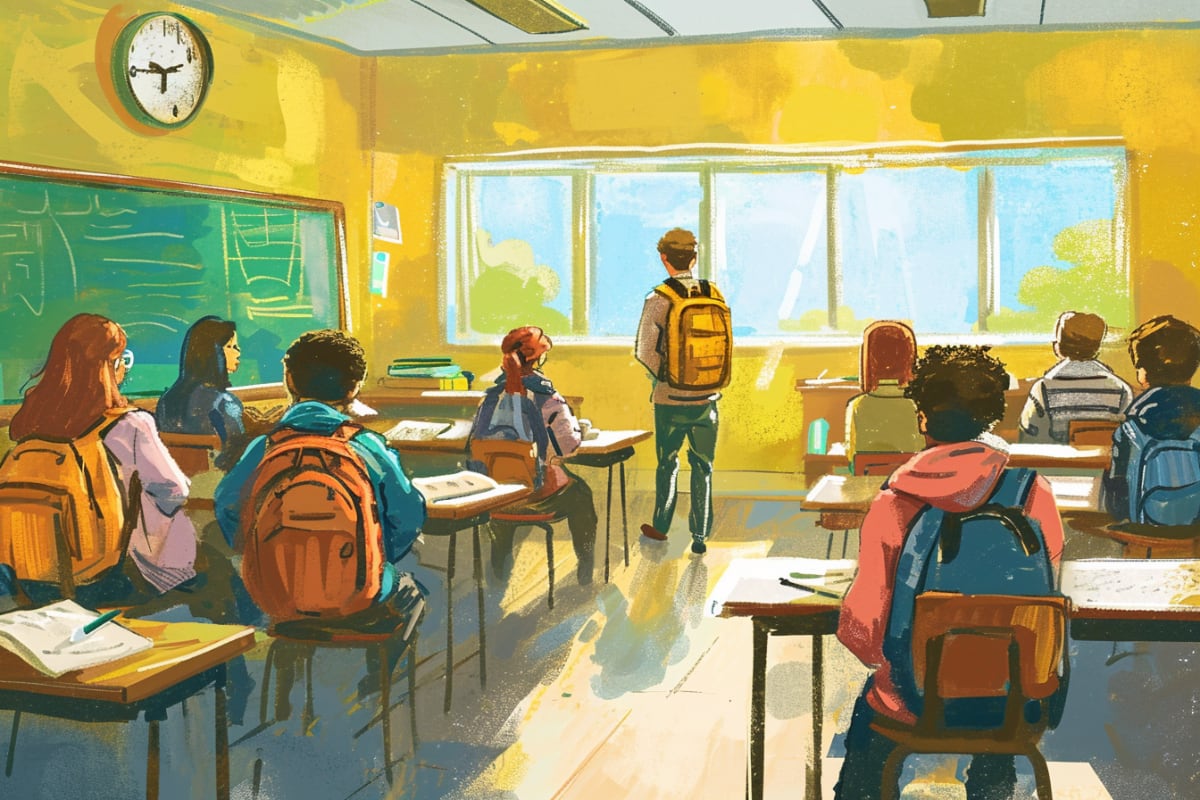Art class is a unique and creative subject that can inspire students to express themselves in new ways. However, engaging students in art class can be challenging, especially if they are not naturally drawn to artistic pursuits. It is essential to look at how to engage students in art class. With the help of 8 important things, you can engage your students in the classroom forever.
1. Create a Positive and Supportive Environment
Creating a positive and supportive environment is one of the most critical aspects of engaging students in art class. Students need to feel comfortable and safe to explore their creativity and express themselves in new ways. As an art teacher, you can create a positive environment by encouraging your students to take risks, providing constructive feedback, and celebrating their successes.
2. Provide a Variety of Materials and Mediums
Art class is an excellent opportunity for students to experiment with different materials and mediums. You can encourage your students to explore their creativity and find new ways to express themselves by providing various materials, such as paint, pencils, clay, and fabric. Additionally, it is essential to provide age-appropriate materials to engage your students and help them develop their skills.
3. Introduce Inspiring Artists and Art Styles
Introducing inspiring artists and art styles is an excellent way to engage students in art class. By sharing the work of famous artists such as Picasso, Van Gogh, and Frida Kahlo, you can inspire your students and help them appreciate art’s diversity. Additionally, you can introduce different art styles, such as impressionism, cubism, and surrealism, which can help your students, understand the art elements and develop their unique style.
4. Incorporate Technology
Incorporating technology into art class is an excellent way to engage students and help them to develop their digital literacy skills. Students can manipulate digital images and create unique artwork using programs such as Adobe Photoshop. Additionally, you can introduce students to digital art forms such as digital painting, animation, and graphic design, which can help expand their understanding of art and its creation.
5. Provide Opportunities for Collaboration
Collaboration is an excellent way to engage students in art class. By working together, students can share their ideas, support, and learn from one another. You can provide opportunities for collaboration by assigning group projects or encouraging students to work together on a larger project. Additionally, please encourage students to give feedback and critique each other’s work, which helps to improve their skills and develop their ability to communicate effectively.
6. Encourage Self-Expression
Art class is a unique opportunity for students to express themselves and explore their creativity. As an art teacher, you can encourage self-expression by providing open-ended projects and allowing students to choose their materials and mediums. Additionally, you can provide opportunities for your students to reflect on their artwork and discuss their creative process, which can help them to develop their critical thinking skills.
7. Provide Real-World Connections
Providing real-world connections is an excellent way to engage students in art class. By showing how art is used in various fields, such as advertising, fashion, and architecture, you can help your students understand art’s practical applications. Additionally, you can invite guest speakers, such as local artists or graphic designers, to speak to your students and share their experiences.
8. Let Their Innovative Ideas Work
Art is a subject where there is no syllabus for the class. If you want your students to get better involvement in this activity, let them choose art or craft. Some students might be good at making portraits, and some might be good at painting jobs. Not every student has a similar interest in art. Students are often full of talent and curiosity to make something new. However, how to engage students in art class is entirely up to you.
Types of arts
Visual art: It always includes basic art such as drawing, painting, sculpture, printmaking, and mixed media. These are some different forms of techniques and styles that students learn in basic drawing classes.
Performing art: Art includes painting, drawing, dancing, music, filmmaking, and theatre. These are some essential skills of life that can help for a better future ahead.
Digital art: Digital art includes graphic designing, animation, video production, and digital painting. These are also part of software and technology because attending digital art classes without technology is impossible.
Architecture: Architecture is another basic form of art in vocational schools. In this, the teacher teaches their student about building construction so that they can create their design. Architecture has its different principles, which is necessary for every student to learn if they want to design their building map perfectly.
Conclusion
Engaging students in art class is essential for promoting their creativity, critical thinking, and communication skills. As an art teacher, you can use various strategies to engage your students effectively, such as creating a positive and supportive environment and providing real-world connections.
FAQs
1. What are some benefits of art education for students?
Art education can be an essential topic for creativity development and critical thinking. It can also help develop problem-solving, visual literacy, communication, and collaboration skills.
2. How can teachers incorporate art history into art classes?
For students, it is prevalent to get quickly interested in art and craft. However, engaging them in the history of arts might be difficult, but using different art movements and styles can help you to engage them.
3. What are some ways to integrate technology into our class?
The most common way to integrate technology into our class is by using digital tools and software to create art.
4. What is the importance of student engagement?
Student engagement is a crucial topic for teachers because, without proper involvement of students in the classroom, you will never be able to teach them with perfection.
5. How can art classes be used to promote cultural awareness and diversity?
Art classes often deal with the diversity of different cultures and ethnicity. Exploring the proper history of different culture always spreads awareness and promotes diversity among students.





